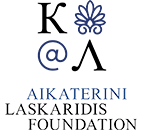Coins (246 Subjects)
Golden Gate or Axios (Vardar) Gate in Thessaloniki. Ancient coin from Amphipolis. From edition of the mid-19th century.
The Church of the Holy Sepulchre in Jerusalem. In the foreground, a Turk charges the pilgrims their entrance to the church.
Coins from Crimea, Ottoman era.
Ancient coins from Crimea.
Ancient tomb outside the city of Rhodes.
A coin of emperor Antoninus Pius. A coin of emperor Germanicus. The drawings were probably based on descriptions of ancient coins rather than made from acctual items.
Roman coin of Emperor Otho. Ancient coin from Lesbos island. Ancient coins from Tinos island.
Ancient coins from Zakynthos (1), Abydos (2), Izmir (3), Thyateira (4), Roman coins of emperors Commodus and Caracalla from Patras (5,6), coins from Delphi (7) and Sicyon (8).
Ancient coins from Thyateira (1), Izmir (2), Ephesus (3), Pergamon (4), Laodicea (5), Philadelphia (6), Sardes (7) and Magnesia (8).
Ancient coins from Phocaea (1, 2), Sardes (3, 4), and possibly Izmir (5, 6).
Ancient coins from Tmolus (1), Izmir and Hierapolis (2), Milas (3, 4), coin of emperor Gallienus from Metropolis in Ionia (5), Colophon (6), coin of emperor Caracalla from Lebedus and Nicaea (7, 8).
Ancient bridge in Marsala (anc. Lilybaeum). Antiquities from Marsala.
Relief showing a scene from the myth of Proserpina, Roman deity equivalent to Greek Persephone. Archaelogical findings from Sicily.
Ancient Greek and Byzantine coins of Thessaloniki.
Roman coin from Thessaloniki.
Antiquities from ancient Pella.
Roman coins of Macedonia.
Hellenistic coins bearing portrait heads of Alexander the Great.
Ancient Greek (Macedonian) and Roman coins from Philippoi. Pedestal bearing Roman inscription from Philippoi.
Coins of ancient Athens. Coins of the city of Neapolis (today Kavala) in Macedonia, which was a member of the Athenian League.
Ancient coins from Bertisco, a mountain at the north of Thessaloniki district. Most probably the coins came from the cities of Crestonia, an ancient province of Macedonia. Coins from the ancient kingdom of Bisaltia in Macedonia.
Ancient coins from Bertisco, a mountain at the north of Thessaloniki district. Most probably the coins came from the cities of Crestonia, an ancient province of Macedonia. Coins from the ancient kingdom of Bisaltia in Macedonia.
Coins of the kings of Macedonia.
Title page.
Ancient coin of Macedonia.
Ancient coin of Naxos.
Coin of ancient Byzantium.
Coins of Persia.
Coins of the Great Mongols of India.
Coins of one king and two majarajas, all tributaries of the emperor of the Great Mongols of India.































